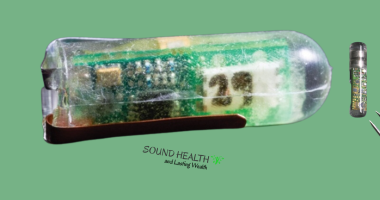Skipping Radiotherapy May Be Safe for Low-Risk DCIS Patients After Surgery – Study A landmark study published in December 2023 sheds light on a potentially transformative approach for treating ductal carcinoma in situ (DCIS), a noninvasive stage of breast cancer. The study, presented at the San Antonio Breast Cancer Symposium, suggests that low-risk DCIS patients can safely skip the traditional post-surgical radiotherapy, paving the way for a personalized and less invasive treatment paradigm.
This novel approach hinges on two key tools:
1. Bilateral Magnetic Resonance Imaging (MRI): This imaging technique offers a clearer picture of the breast tissue compared to traditional mammography, enabling surgeons to identify the extent of DCIS more precisely. This, in turn, allows them to tailor surgery, potentially sparing patients from unnecessary mastectomies.
2. Oncotype DX Breast DCIS Score: This innovative gene expression test analyzes the tumor tissue to assess the risk of DCIS recurrence. By generating a score between 0 and 100, it helps healthcare professionals stratify patients into low- and high-risk groups, guiding the decision to include or omit radiotherapy.
The study, led by Dr. Seema Khan from Northwestern University, followed 171 DCIS patients who underwent breast-conserving surgery. Their tumor tissue was analyzed using the Oncotype DX score, and those with a score below 39 (indicating low risk) were offered the option to skip radiotherapy. After five years of follow-up, the results were encouraging:
- No statistically significant difference in recurrence rates was observed between low-risk patients who skipped radiotherapy and those who received it.
- The Oncotype DX score proved to be an effective tool in identifying low-risk patients who did not require additional radiation treatment.
This research has significant implications for the future of DCIS treatment. By combining the power of MRI and the Oncotype DX score, it becomes possible to:
- Personalize treatment decisions: Patients at low risk of recurrence can potentially avoid the side effects and inconvenience of radiotherapy, improving their quality of life.
- Reduce treatment burden: By minimizing unnecessary procedures and treatments, healthcare resources can be allocated more effectively.
- Improve patient outcomes: Tailoring treatment based on individual risk profiles has the potential to optimize outcomes and minimize the risk of recurrence.
While the study represents a major breakthrough, it is crucial to acknowledge its limitations. The relatively short follow-up period and the non-randomized design necessitate further research with larger patient cohorts and longer follow-up times.
ALSO READ: Post-Surgery Opioid Prescriptions Decline, But More Work Needed
Study Details:
- 171 patients with DCIS underwent breast-conserving surgery and tumor tissue analysis.
- Patients with low-risk scores (below 39) could skip radiation, while those with high-risk scores (39 or above) received it.
- Adherence to score-based recommendations was high.
- After five years, there was no significant difference in recurrence rates between groups.
Limitations:
- Short follow-up time.
- Small sample size.
- Non-randomized design.
Despite these limitations, the findings offer a promising glimpse into the future. By leveraging cutting-edge technologies and personalized medicine, we are on the cusp of a new era in DCIS treatment, one where precision and patient-centered care take center stage. This research paves the way for a future where low-risk DCIS patients can confidently explore options beyond the traditional paradigm, leading to improved outcomes and a higher quality of life.
Implications:
This study provides promising evidence that personalized risk assessment using the Oncotype DX Breast DCIS Score can help guide treatment decisions for women with DCIS. By identifying low-risk patients who may safely skip radiation, this approach could improve patient care and reduce treatment burden. However, further research with longer follow-up periods and larger patient populations is needed to confirm these findings.
Continue to check our website soundhealthandlastingwealth.com for more articles of this kind. And, please use our comment section as well, we would love to hear from you.









